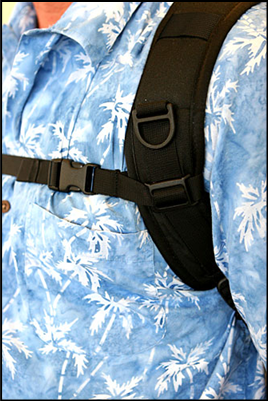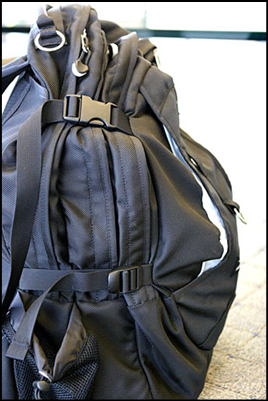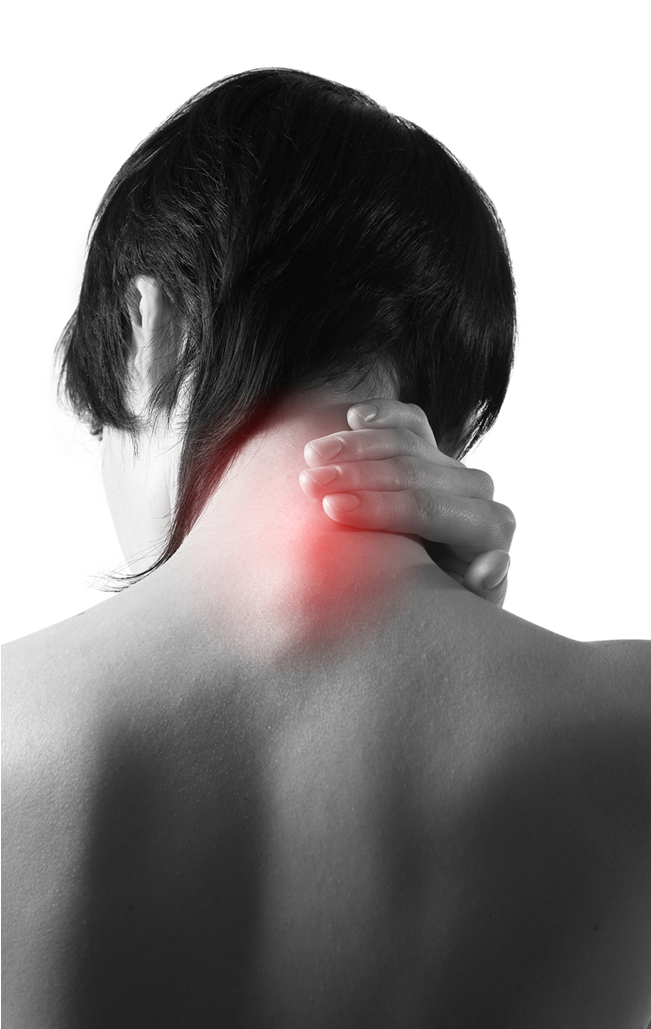Backpacks, Laptops & Notebooks
Click below for helpful information on ergonomic considerations that will assist in placing the least amount of stress on the body surrounding the usage of backpacks, laptops, and notebooks while you are a student at MSU.-
Backpacks
 Within the university, backpacks are essential for carrying the various items needed for school work, textbooks, laptops, stationary, water bottles, music players, lunch and a hundred other items.
Within the university, backpacks are essential for carrying the various items needed for school work, textbooks, laptops, stationary, water bottles, music players, lunch and a hundred other items.
There are huge selections to choose from and selecting a good backpack that meets your needs and fits correctly is like finding a good pair of shoes.
Here are a few suggestions when deciding to purchase a backpack:
- Size – get one as small as practically possible. A half-empty pack does not sit well on the back and causes items to move around and settle awkwardly. The larger the backpack the more items you are likely to cram into it and haul around campus. Miscellaneous items that add to weight are often forgotten and left in pockets or at the bottom.
- Design – Wide adjustable shoulder straps. This spreads the load over a greater area and prevents irritation on the front of the shoulder.
 Believe it or not, shoulders normally are not square and slope down from the neck. Therefore a good idea is to see if the pack has a ‘sternum’ strap that helps keep the shoulder load from sliding outwards.
Believe it or not, shoulders normally are not square and slope down from the neck. Therefore a good idea is to see if the pack has a ‘sternum’ strap that helps keep the shoulder load from sliding outwards.Another good idea is ‘lateral’ straps that tighten and compress the bag when less full. This prevents items from moving around and keeps things tight against the back.
Wear the backpack before you buy it! Even though it is unlikely to simulate when it’s full you can get the idea of how the shoulder straps feel. Keep the receipt. When you get home, fill it up and see how it feels. Remember it’s an investment - get a good one!
-
Laptops & Notebooks
 While the laptop computer may be a good choice for many people, the use of a laptop computer can pose potential ergonomic risks to intensive users. For all of the technological advances built into a laptop, the physical design of the machine is reminiscent of an older era. Laptops are difficult to set up properly so that they are ergonomically correct. The keyboard is small versus a standard size keyboard and places a worker's hands and wrists in awkward positions.
While the laptop computer may be a good choice for many people, the use of a laptop computer can pose potential ergonomic risks to intensive users. For all of the technological advances built into a laptop, the physical design of the machine is reminiscent of an older era. Laptops are difficult to set up properly so that they are ergonomically correct. The keyboard is small versus a standard size keyboard and places a worker's hands and wrists in awkward positions.
The fact that a laptop keyboard and monitor do not adjust independently of one another forces a user to choose between comfortable hand/wrist or head/neck posture. When used alone on a desk, the laptop forces users to lean forward, away from the backrest of the chair, often with hunched shoulders, no lower back support, and contact stress on their forearms and wrists from resting on the front edge of the desktop.
So what can happen?
Improper positioning of the monitor can increase visual demands and lead to eye strain. Poor keyboard design and the use of trackpads or eraser-head joystick type pointing devices can lead to repetitive stress injuries of the user's upper extremities. Therefore, it falls upon the laptop user to assume the responsibility of providing a safer environment to work when using a laptop computer What to do?
What to do?
For frequent laptop users, the best suggestion would be to purchase a separate keyboard and mouse. This will permit a better positioning of both input devices and the screen. Both wired and wireless devices are widely found in the stores and are easily set up using primarily the USB ports.
Elevating the screen to a height that reduces neck strain, encourages better overall posture. Laptop ‘raisers’ are widely available in stores, but not essential. Placing the laptop on a pile of books or a small box functionally works just as well.
The ideal height of the screen is where the top edge of the computer is close to the same height as the eyes.
Ideal distance of the screen depends on the individual, however usually at least one ‘arms’ length away when sitting up erect.

